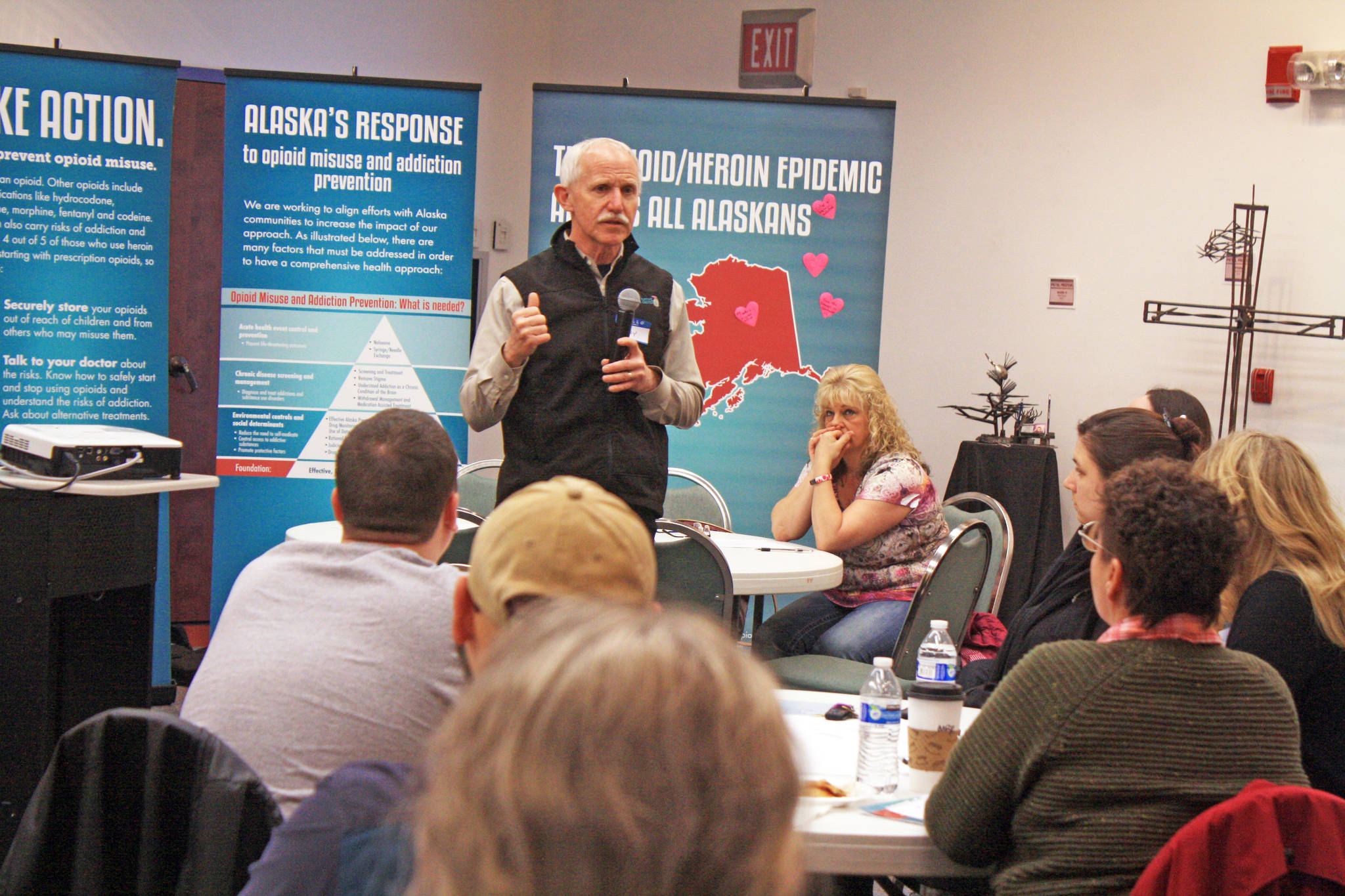Over the last two decades, an opioid epidemic has hit Alaska like a slow-moving tsunami, with multiple waves bringing new destruction to the social and economic landscape.
And as with any natural disaster, it will take years to clean up and there’s no one-size-fits-all solution.
That’s the premise of a statewide response initiative headed up by the Office of Substance Misuse and Addiction Prevention, created in the wake of Gov. Bill Walker’s February 2017 statewide opioid epidemic disaster declaration.
The office is seeking to develop individualized strategies to tackle the crisis from the ground up by reaching out to communities, bringing together public and private resources, and finding locally effective measures to tackle to crisis.
“Whenever we go as a governmental agency to create a plan, a lot of the time what we do is we create a plan behind the door, (and then) we come to an event like this and say, ‘Hey, we got this great plan what do you think of it,’” Office of Substance Misuse and Addiction Prevention Director Andy Jones said. “And every time we do that, that always goes south for us.”
Jones and other officials have been traveling to locations across Alaska on an almost weekly basis, engaging with local groups and individuals to collect information on the existing state of the crisis, working to identify resources available and to find gaps in care and community support.
The ultimate goal is to create a “true plan that’s built by the communities” that can guide public policy and help local businesses and organizations focus their efforts, Jones said.
Finding the right solutions for Kenai
On Thursday, members of the Kenai community turned out for the “Your Voice, Your Community” forum, which was facilitated by the Office of Substance Misuse and Addiction Prevention in partnership with Change 4 the Kenai coalition.
The event brought together public health officials, law enforcement, community support and treatment organizations, families of those suffering from substance misuse and even those currently struggling with addiction to discuss the existing needs and challenges the Kenai community faces in tackling the opioid problem.
Speaking during the event, Jay Butler, chief medical officer for the Department of Health and Social Services, Division of Public Health said the crisis had developed in three distinct waves over the last 20 years.
The first wave, Butler said, was a radical change in how pain was managed by doctors, who began prescribing opioids for pain management two decades ago.
“Many of us in medicine — myself included — we drank the Kool-Aid,” Butler said. “We didn’t ask enough questions as we started prescribing more of these medications.”
The problem was, opioids don’t really work that well for chronic pain, because they require higher and higher doses for patients to maintain pain relief, Butler said.
“And if you try to stop them, you’ll get dope sick,” Butler said. “You will feel bad. You will hurt all over.”
For a minority of users, opioids can lead to a crippling addiction with life-altering consequences.
“It takes you from a situation where you’re using it to feel great, to where you’re using it just to feel normal,” Butler said. “You don’t have the drug, life ain’t the same, and it’s hardly worth living.”
The second wave of the tsunami came about 10 years ago when heroin arrived on the scene. With drug makers changing formulas to make prescription opioids harder to inject, and doctors more wary of prescribing the painkillers, heroin was a cheap and accessible alternative, Butler said.
The third wave began about three years ago, with the arrival of fentanyl — an extremely powerful synthetic opioid that has helped buttress the number of opioid-related deaths even as prescription opioid and heroin overdose numbers have fallen.
“These are terms that I don’t like to throw around, but anytime we’re talking about a cause of death that’s quadrupled over a period of less than 20 years, that is a public health crisis,” Butler said. “It’s an epidemic by an academic definition.”
Creating a community discussion
Thursday’s forum was structured as a kind of “community cafe” where participants to gather around large round tables to discuss different community responses to opioid addiction and misuse.
“We’re not here to say, hey, we’ve got the answer. We’re here to work together with you to develop answers,” Butler said. “Because one of the things I’m more and more impressed with is that every community is different, and the solutions are that most appropriate in Ketchikan may not be what’s most appropriate in Kenai.”
Attendees were asked to provide feedback on nine strategies: Upstream prevention efforts, withdrawal management, community prevention through education, creating a treatment, security measures to reduce the supply of drugs, alternatives to arrest and incarceration, prescribing and dispensing practices and overdose death prevention.
In stages, participants were asked to fill out large white sheets of paper to detail the existing community efforts in each area, address what’s going well, what’s not working or could be different, and what some of the barriers are to success on each front.
In the short-term, the data from the forums will be collated and made available to communities so service organizations, nonprofits, public health officials and individuals can better understand the breadth of resources available and areas of need.
In June, public health officials will hold a policy forum with subject matter experts and advisers who will help develop a larger strategic plan that will be finalized by the end of the summer.
Reach Erin Thompson at ethompson@peninsulaclarion.com.

